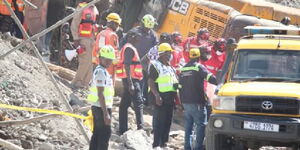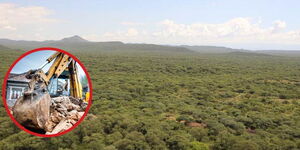UPDATE 27/08/2020 16:12 P.M: Project Loon confirmed to Kenyans.co.ke that the balloon that landed in DRC on Wednesday, August 26 was among those deployed in Kenya.
A spokesperson for the Google subsidiary, however, stated that the balloon was deployed in the initial testing phase and was not among those providing commercial internet access. According to Loon, internet for users of the service in Kenya was not affected.
After years of development and testing in emergency situations, the technology was first commercially deployed in Kenya in July.
On Wednesday, August 26, the internet in Kenya, Congo and beyond was abuzz with videos from a farm in Buta, a city in the northern Democratic Republic of Congo (DRC).
What was later confirmed to be a Project Loon balloon had landed, sparking a flurry of chatter and speculation, including claims that it was a UFO.
The high-altitude stratospheric balloons provide internet access by creating an aerial wireless network, registering speeds of up to 1 Mbps. The first commercial deployment of the technology, owned by Google subsidiary Loon LLC, took place in Kenya in July and made international headlines.
Multiple reports, including from credible outlets, indicated that the balloon had crashed.
The spokesperson for Project Loon, however, told Kenyans.co.ke that it was actually a controlled landing executed with the knowledge of relevant authorities.
"The Loon Team and the DRC air traffic team worked on this landing. I can confirm that Loon executed a controlled landing of one of our stratospheric balloons in DRC.
"This landing was done in a safe and secure manner after coordinating with local air traffic control officials. This landing was specifically approved by the Civil Aviation Authority (CAA)," Loon noted.
The spokesperson further revealed that the landing was deliberately done in an isolated area, describing Loon's landing procedures.
"A parachute deployed and the balloon was brought to the ground at a relatively low speed in an isolated area.
"At no time did it pose a risk to the local population. A loon recovery team is already on site to collect the balloon and components," Loon disclosed after the landing on August 26.
A statement was later issued by Tshiumba Mpunga Jean, Director-General of the DRC Civil Aviation Authority confirming that a Google Loon balloon landed in the country's airspace.
Coming months after the balloons were deployed in Kenya by Google to offer internet access, the landing sparked speculation in Kenya that the balloon was among those deployed to provide 4G LTE internet in July.
Project loon was, however, by the time of publication yet to respond to queries from Kenyans.co.ke on whether the balloon was among those commercially deployed in Kenya.
Before they were deployed to cover 30,000 square miles in Kenya, the balloons had only previously been tested in emergency situations including Puerto Rico after the devastating Hurricane Maria in 2017.
In Kenya, it covers rural and remote areas as well as the capital, Nairobi. Wind data is key in how the balloons are moved.
After a wind layer with the desired speed and direction is identified, the balloons are maneuvered by having their altitude adjusted.
Watch a video from the landing site below:
{"preview_thumbnail":"/files/styles/video_embed_wysiwyg_preview/public/video_thumbnails/ZCel-7NKYuo.jpg?itok=d9XA6eoz","video_url":"","settings":{"responsive":1,"width":"854","height":"480","autoplay":0},"settings_summary":["Embedded Video (Responsive)."]}












